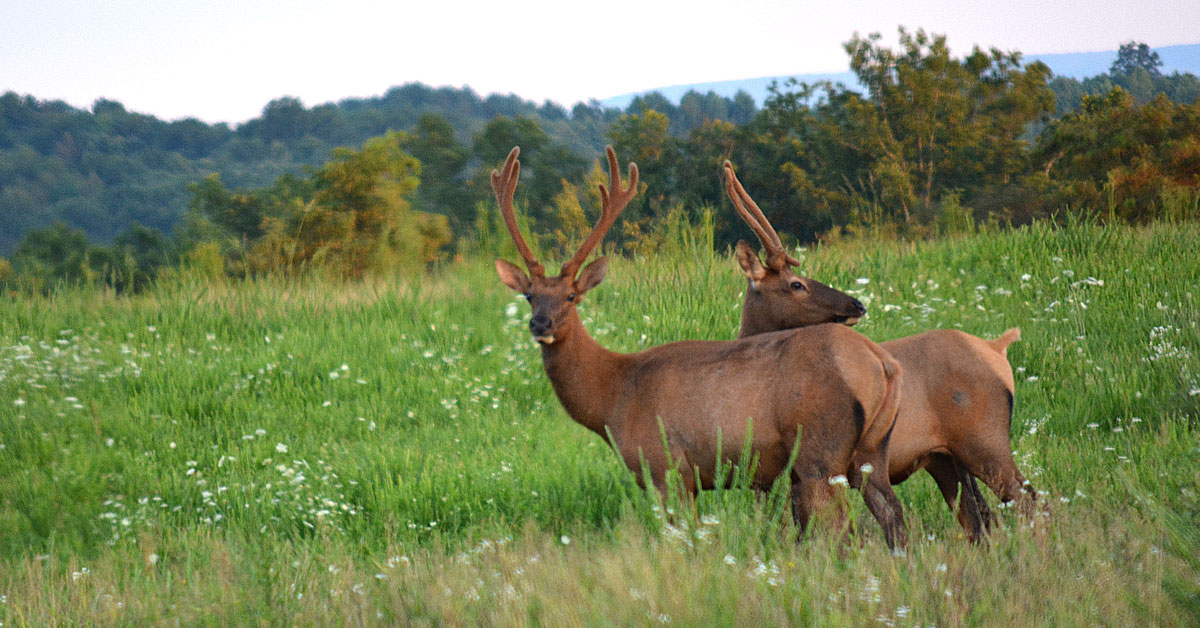While elk spend much of their time in forested areas, the majority of their diet consists of grasses and forbs that they find in field openings on private lands and reclaimed strip mines. They use wooded areas primarily as a refuge from heat, and likely to avoid human disturbance. While in the forested areas, they do feed on a variety of understory plants and leaves of browse species. However, quick access to quality grass and forb forage in open areas is necessary for an elk herd to be sustainable in an area.

The focal area identified for the restoration of the current Virginia elk in 2012 through 2014 was 2,600 acres at an average elevation of 2,000 feet in Buchanan County that had seen significant coal mining efforts in the past. Strip mining for coal involves the explosive removal of mountaintops, including trees, vegetation, and earth, to expose coal seams, which are then removed. Regulations require that the mining companies mitigate the damage with restoration efforts, which usually include replacing the rubble of stone and earth created by the explosion and covering it with topsoil and seed. Theses strip mine locations were ideal in terms of the combination of wooded and open areas, but the habitat and forage needed improvement to sustain an elk herd.

DWR would not have been able to achieve the elk restoration without the work (much of it through volunteers) and partnerships with groups like the Southwest Virginia Sportsman, Rocky Mountain Elk Foundation, and other local and national conservation groups. These groups partnered with DWR to provide funding and the work needed to transform the former strip mine site into quality elk habitat. This habitat work focused on improving soil quality, mechanically remove invasive plant species and woody vegetation, and seeding seed mixes that provide quality forage and cover for elk. These habitat modifications have encouraged Virginia’s elk herd to remain stable in small home ranges, with the majority of the herd staying within 5–10 km (3.1–6.2 miles) of the original restoration site. In summer, the elk rarely feed in openings during the heat of the day. Instead, they bed down under cover, forest, or other dense vegetation, and begin to feed shortly before dusk and continue through the night. During the cooler months, they feed in open areas throughout the day.
Not only has the habitat management work benefited elk, but a host of other species have thrived in these areas. The improved habitat has also benefited white-tailed deer, black bear, wild turkeys, and grassland birds, as well as insects, amphibians, and migratory songbirds.

